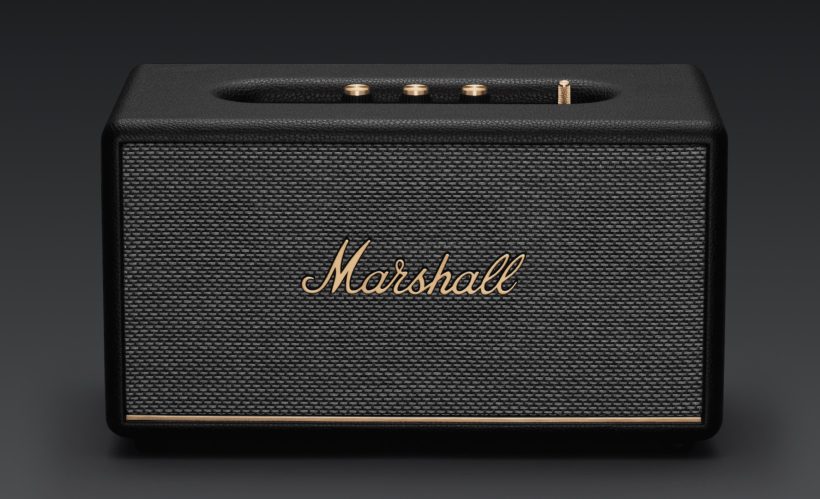The Marshall Stanmore III, released towards the end of December 2022, is Marshall’s signature Bluetooth speaker that delivers a re-engineered and wider stereo soundstage for home music listening. Compared to the previous Marshall Stanmore II speaker, the Stanmore III provides a massive 80W of total power and comes with a single large woofer with dual outward-angled tweeters. The Stanmore III also supports the latest Bluetooth 5.2 audio codec together with RCA and aux inputs which gives you different connectivity options with this speaker.
The Stanmore III speaker features Marshall’s classic vintage design and comes with top analog controls with brass accents which give it a distinctive appearance. It looks like a classic stage amp and comes with a vintage style design with the Marshall logo badge on the front grille of the speaker – the speaker is also AC powered and you also get constant firmware updates via the mobile app. The Stanmore III is a really powerful speaker, and comes with 1 rear-firing bass reflex port for enhanced bass delivery and three Class D amplifiers for extra loud (up to 97 dB SPL) performance. The Stanmore III is a stereo speaker and comes with 2 channels for clean stereo sound performance.
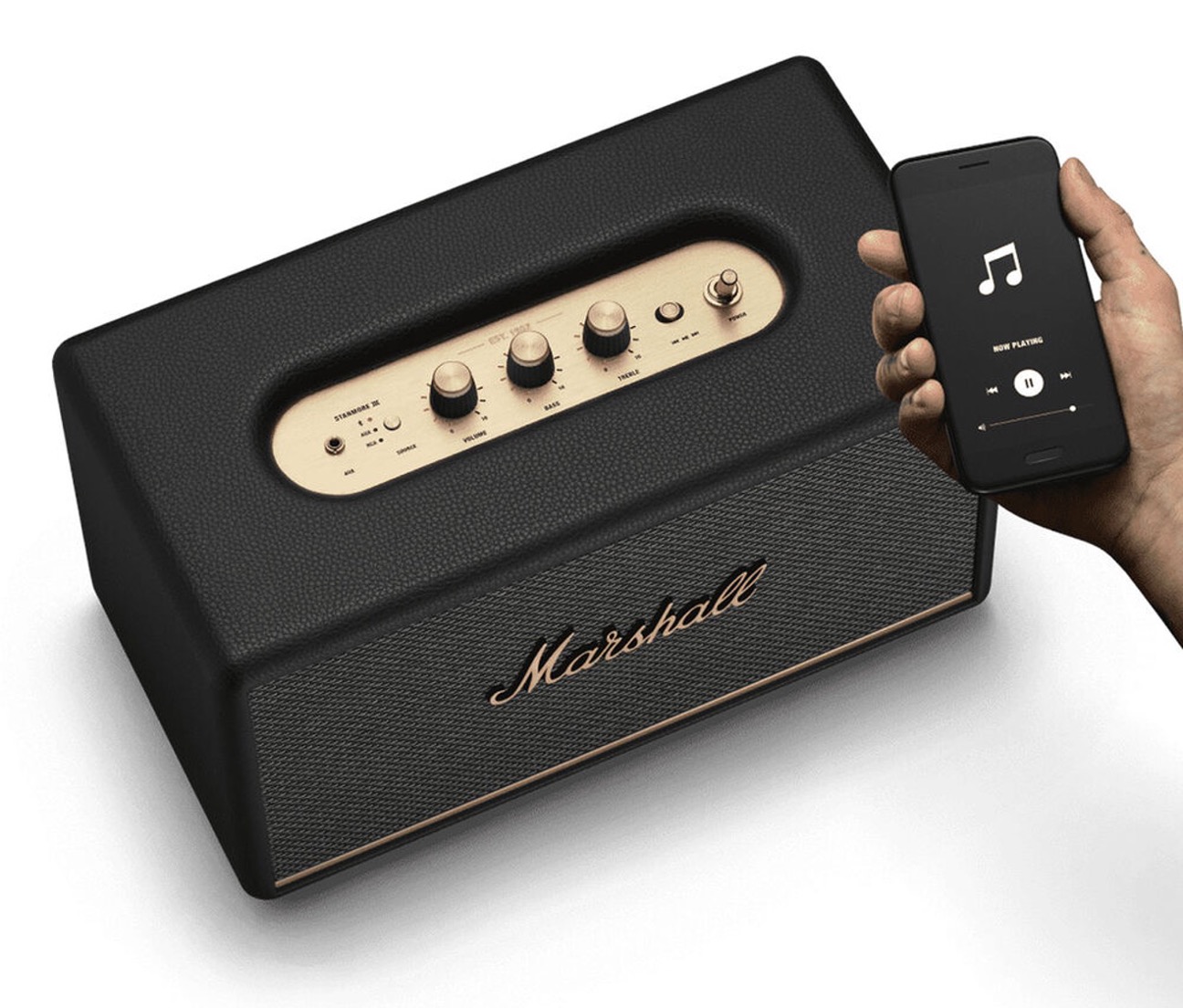
Sound Performance
The Marshall Stanmore III delivers really clean sound performance with good bass response. Compared with the Stanmore II speaker, the Stanmore III is slightly louder with 80Ws RMS (compared with the Stanmore II’s 60W RMS), and delivers a soundstage that sounds wider and more refined. The bass on the Stanmore III is definitely punchier and much more well-rounded than the Stanmore II due to its bass-reflex port, and the frequency response on the Stanmore III goes down to 45 Hz which is slightly lower than the Stanmore II’s 50 Hz. We played a couple of soundtracks including Tony Bennet’s “Fly me to the moon” on live and Dusty Springfield’s “The Look of Love” and they sounded superb with really good stereo separation and soundstage. Vocals from artists sounded bright and crisp with nice timbre ranges, and there is a certain quality in the vocals that make them sound full and engaging with more “gravitas” as compared to other Bluetooth speakers. For a full side by side comparison between the Stanmore III and Stanmore II’s sound performance, check out our guide here on the Stanmore III vs Stanmore II.
We really liked the bass response on the Marshall Stanmore III. We played a couple of hip-hop and pop music genres including “Golden Hour” by JVKE and the low-end bass notes sounded really well-rounded and refined; the bass feels tight and punchy and stays where it should be as bass without rolling off into the midrange frequencies. We never once experienced any distortion or bloatedness in the bass response from the Stanmore III – even at high volume levels >80% the bass remains solid and consistently well-defined. You can really push up the volume on the Stanmore III and still get crystal clear and clean sound performance without any hint of distortion.
The Marshall Stanmore III speaker gets really loud and you can push up the volume on this speaker with minimal distortion. The highs and midrangs are well-defined and crystal clear, and we particularly enjoyed listening to vocals and classical jazz on this speaker. This speaker also delivers a considerable amount of bass and sub-bass performance, making it good for EDM or hip-hop music performances. We would say that this speaker has a slightly warm sound signature which is more bass-leaning – however, we liked how engaging vocals sounded on this speaker and the sparkle in the highs and instruments.
Design
The classic vintage amp design of the Marshall Stanmore III is definitely one of its strengths. This speaker looks absolutely amazing with polished analog button controls with brass accents, and comes with a leatherette exterior which gives the speaker a vintage vibe. We also liked the gold-colored Marshall logo badge at the front grille of the speaker. To increase the bass and volume, you can either do so on your smartphone device (which connected to the speaker) or simply turn the bass or volume knobs. The power button also looks really classy like a vintage player power button, and the entire speaker looks really nice in any modern home setup. You can adjust the bass, treble and volume controls directly on the top of the speaker.
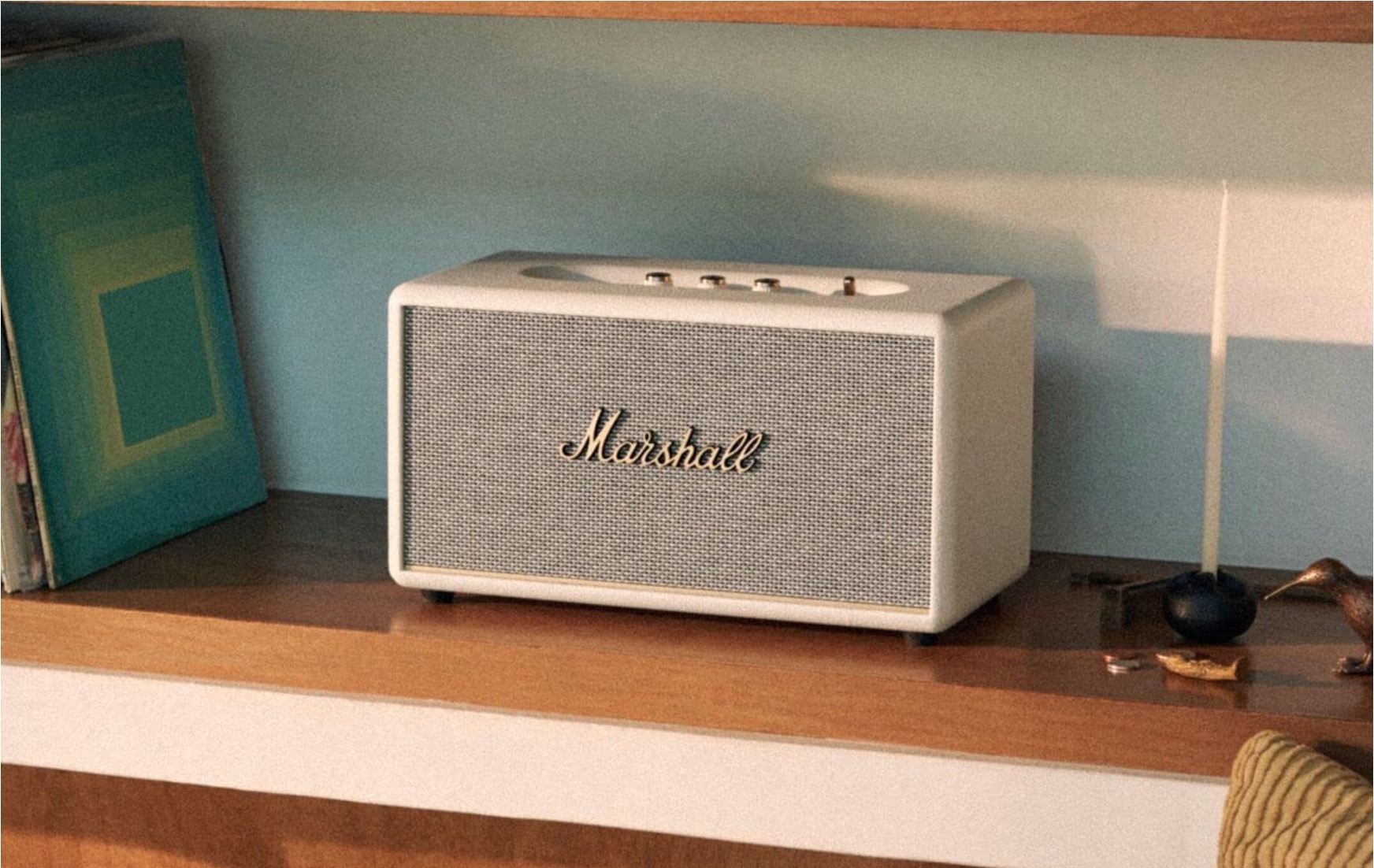
We really like the unique vintage design of the Marshall Stanmore III speaker and it complements any home turntable setup or speaker system. You’ll need to plug it into AC power (the Stanmore III is not battery powered), and is best placed near the TV or anywhere in the room where you wish to stream music from.
Specs
The Marshall Stanmore III provides up to 80W RMS of output power and comes with a woofer and dual outward angled tweeters which provides really good stereo sound performance. This speaker also supports the latest Bluetooth 5.2 and supports multiple input options including 3.5mm auxiliary and RCA inputs like a turntable or digital player. One of the new features that the Stanmore III has is dynamic loudness which automatically adjusts the tonal balance of your audio at any volume level, allowing you to hear really loud sound performance with minimal distortion. The speaker’s wireless Bluetooth range is up to 30 feet and the entire speaker is AC powered which makes it ideal as home speaker.
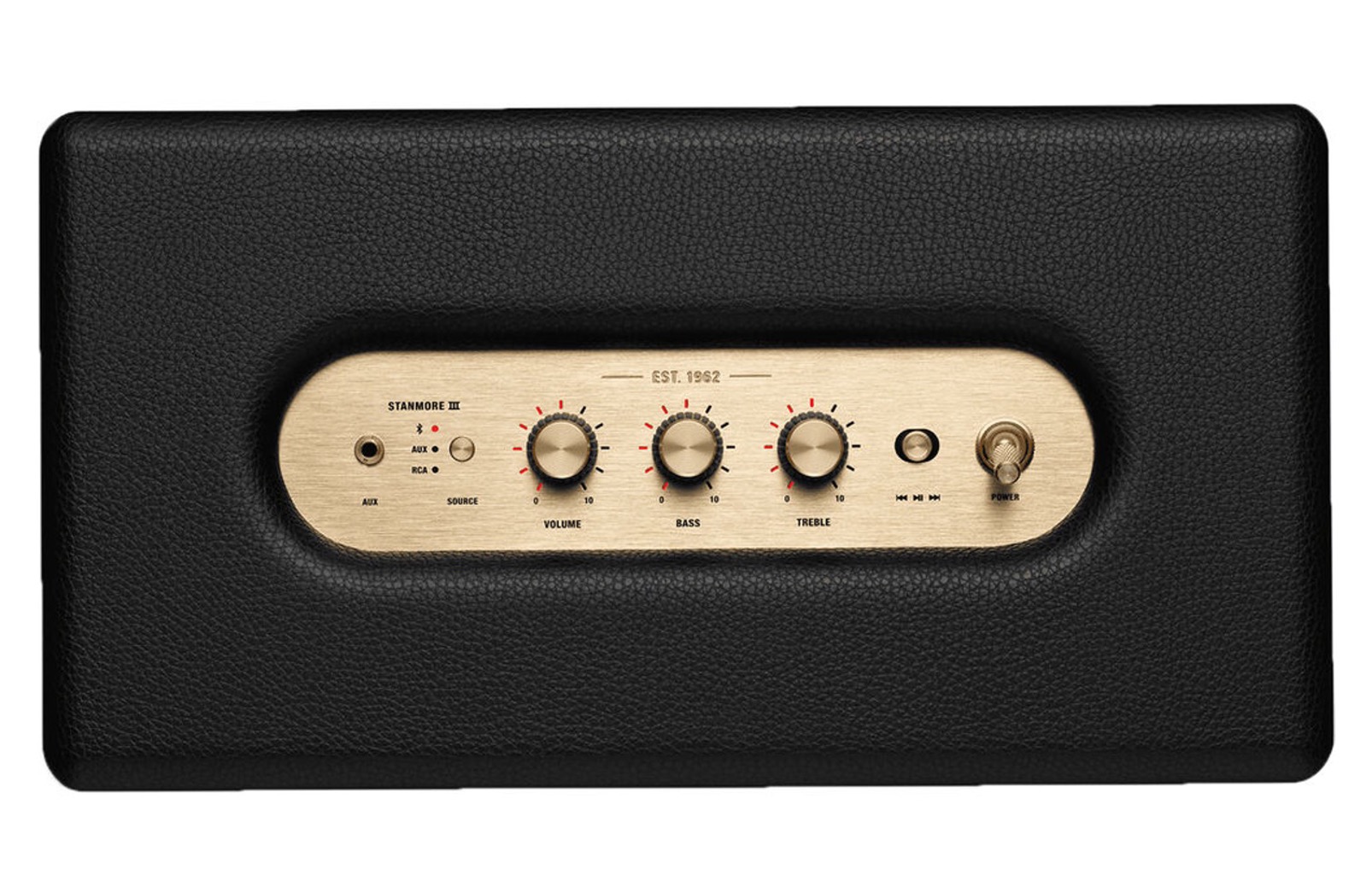
The entire speaker comes with three Class D amplifiers that can deliver a maximum volume of up to 97 dB SPL and supports stereo sound production with its 2-way speaker design. Compared with the Stanmore II, the Stanmore III is actually slightly lighter than the Stanmore II and weighs approximately 9.5 lbs (compared to the Stanmore II’s 10.2 lbs). Both speakers also come with bass reflex port design, but we found that the Stanmore III delivers better and more refined bass that punches deep and provides plenty of depth. We did find that the Stanmore III delivers better soundstage than the Stanmore II, with much more spatial depth and vocal positioning that allow you to pinpoint where the artist is standing on stage, especially with jazz music performances.
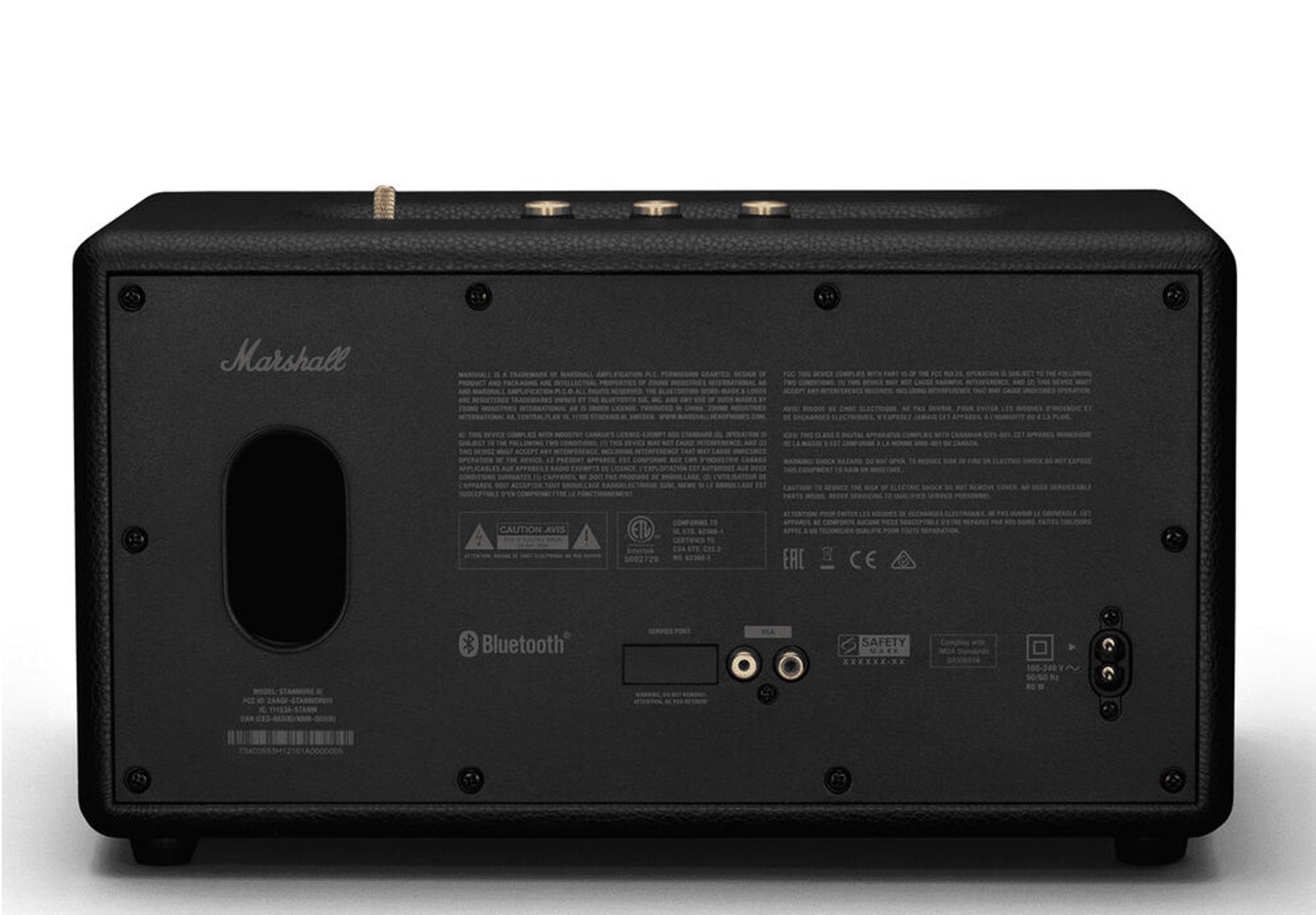
The Verdict?
The Marshall Stanmore III is one of the best Marshall speakers that delivers a solid 80W RMS sound performance with a classy vintage design. Compared with its predecessor the Stanmore II, we felt that the Stanmore III delivers much wider stereo soundstage and is able to capture subtle details in the music which you might not have noticed before, particularly in instrumental and jazz performances. The Stanmore III also comes with improved specs such as Bluetooth 5.2 and improved bass reflex port which enhances the lower-end sound performance. Apart from wireless Bluetooth, the Stanmore III speaker also supports RCA and 3.5mm auxiliary inputs which make it easy to connect to various music sources. The speaker also features Marshall’s classic vintage amp design with really nice top analog button controls with brass accents with a leatherette exterior – it’s a very good looking and classy speaker to have and blends in nicely with modern home interior décor. Overall, the Marshall Stanmore III is a solid and classic vintage speaker that delivers superb stereo sound performance with very wide soundstage, and we highly recommend them.

